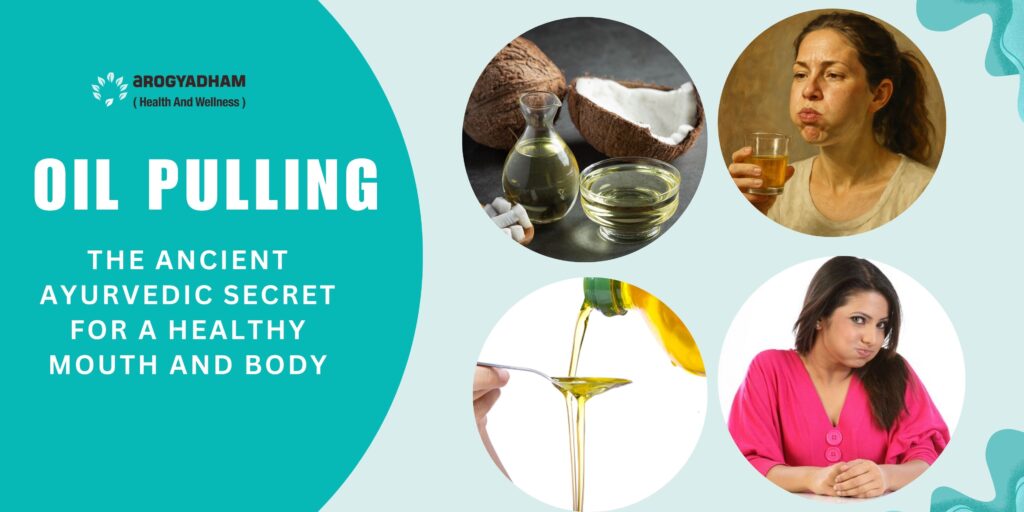How Tech Is Transforming Ayurveda Worldwide
- Home
- /
- Ayurvedic Medicines
- /
- How Tech Is Transforming...

Ayurveda is a 5000-year-old health science, a timeless wisdom that has been an integral part of our society, caring for people’s health and wellness for ages.
Ayurveda is made up of two words, where Ayur means life, and Veda means science; together can be called the science of life. This science of life is rooted in universal principles and practised in harmony with nature, providing insights into the connection between mind and body.
This ancient Vedic wisdom is now attracting widespread attention worldwide, which suggests a promising future ahead. In the age of rapid technological shift and advancement like the faster a new technology is introduced, the quicker it gets outdated. There is a rising trend of mixing traditional wisdom with modern methods, and Ayurveda is leading this trend right now.
There was a time when many people preferred quick results and lost patience with slow, natural healing. But now, most people are realising that lasting wellness takes time. This understanding has brought Ayurveda back into the spotlight, and today, it is growing beautifully in the digital space.
The new technology is writing off all the limitations a person has faced in seeking Ayurveda consultation, knowledge, and treatment, from wellness apps to Telemedicine and AI to social media. This assistance sets a global stage for this time-tested ancient wisdom.
Before discussing the growing popularity of Ayurveda from a technological point of view. Let’s dive into its concepts and approaches in brief-
Ayurveda: Core Concepts and Principles
Ayurveda considers life to be a union of the physical body, the senses, the mind, and the soul, whose quality of coordination defines one’s health. It is divided into eight branches collectively called Ashtanga Ayurveda: internal medicine, gynaecology, obstetrics and paediatrics, psychiatry, ENT, surgery, toxicology, geriatrics, and sexual disorders, which provide specialised healthcare and treatment solutions.
The whole Ayurveda approach is based on the three doshas: Vata, Pitta, and Kapha. These are bodily energies believed to be responsible for all bodily functions and present in every human body in a unique balance. For example, every person has a particular dominant dosha, and the unique proportion of doshas constitutes one’s prakriti, on which their mental and physical being depends. After this prakriti is identified, a person undergoes a treatment best suited to their situation. An imbalance in doshas leads to illness.

Position and Penetration of Ayurveda in the Current Era
Ayurveda is gaining widespread recognition around the world and is being widely adopted. It has now become a significant player in the global wellness industry due to its trusted holistic approach to health, balance-oriented healing, natural remedies, and preventive care, marking a greater international influence.
In recent years, the global ayurveda market has seen steady growth. In 2023, it was valued at 14.4 billion USD, which is projected to reach 76.9 billion USD in 2030.
How is it being adopted regionally around the world? Europe accounts for 30% of the global market, followed by the North American market, which is currently the fastest-growing market in the world. Asia remains the biggest market, with India and China leading in ayurvedic product consumption and production.
Since 2014, the global Ayurveda market has expanded nearly tenfold, hinting at increasing awareness among people of natural healing solutions.
Role of AI in Ayurveda
In recent years, AI has shown its penetration in almost every field, including Ayurveda. AI tends to become the greatest human assistance tool ever. There are lots of things that are beyond human limits, like accessing a large amount of data all at once and storing an infinite amount of knowledge or data in one’s mind, which is very useful in comparing the metrics, factors, and in research.
It helps in improving Ayurvedic medicines’ reliability, efficiency, efficacy, and availability. The Ayurveda professionals are using AI to improve the accuracy and efficiency of disease diagnosis and Ayurvedic treatments. The diagnostic features of Ayurveda are a little tricky and subjective, like nadi parikshan and jhiva pariksha, which pose a challenge for standardisation and accuracy. AI tools and equipment can provide valuable assistance in that.
AI can access large data sets and analyse complex patterns, and can easily analyse patients’ symptoms, medical history, and Dosha imbalances. By doing so, AI can suggest an accurate diagnosis and a personalised treatment plan to Ayurveda experts. It makes it easy to achieve precision and perform quick research procedures.
AI in Ayurveda: Key Uses and Benefits
- Research and Development: AI can easily gather information from large datasets, academic literature, and ancient Ayurvedic texts, and can promote knowledge development, make test predictions, or generate fresh ideas. Using AI and computer simulations, it has become easier to virtually investigate the safety and medicinal efficacy of herbal compounds, which helps in accelerating the drug discovery process.
- Data mining: It helps to achieve valuable information through data collection, data mining, and data precision.
- Herb Identification & Quality Control: Using AI, it can easily recognise and identify medicinal plants through powerful image recognition technologies. AI algorithms can also help in evaluating chemical composition and spectral data (associated with components of light or any electromagnetic radiation ) to evaluate the quality & authenticity of herbal goods. Al helps to uplift standards in Ayurvedic formulations.
- Individualised treatment regimens: Ayurveda consultancy follows a personalised wellness approach where, after identifying one’s prakriti and examining their medical history, lifestyle choices, and food preferences. AI can make customised recommendations on diet and lifestyle adjustments. It can also suggest herbal formulations based on its predictive analytics, tailored to each patient’s unique requirements.
- Diagnostic Support: There are many vyadhis (diseases) in Ayurveda that show similar signs and symptoms, and it can be difficult to distinguish between them. AI can provide useful assistance in their diagnosis. It can interpret symptoms, patterns, and patient history by comparing with a large database of past cases and Ayurveda texts.
Telemedicine/ Teleconsultation
Telemedicine enables people to have health consultations online or through other communication channels, allowing them to consult with doctors from the comfort of their homes, whether in remote areas or urban centres. It has now become a more common trend in Ayurveda, Unani, Homoeopathy, and other naturopathies.
Telemedicine has grown rapidly in recent years; many prominent and esteemed Ayurvedic institutions now offer telemedicine services.
Who is regarded as the pioneer in the field? Dr Jay Sanders is considered the father of Telemedicine and now serves as the President and Chief Executive Officer of The Global Telemedicine Group. Dr K. Ganapathy is known as the father of Telemedicine in India. He played a significant role in establishing India’s first telemedicine network, connecting major institutions like AIIMS and PGIMER.
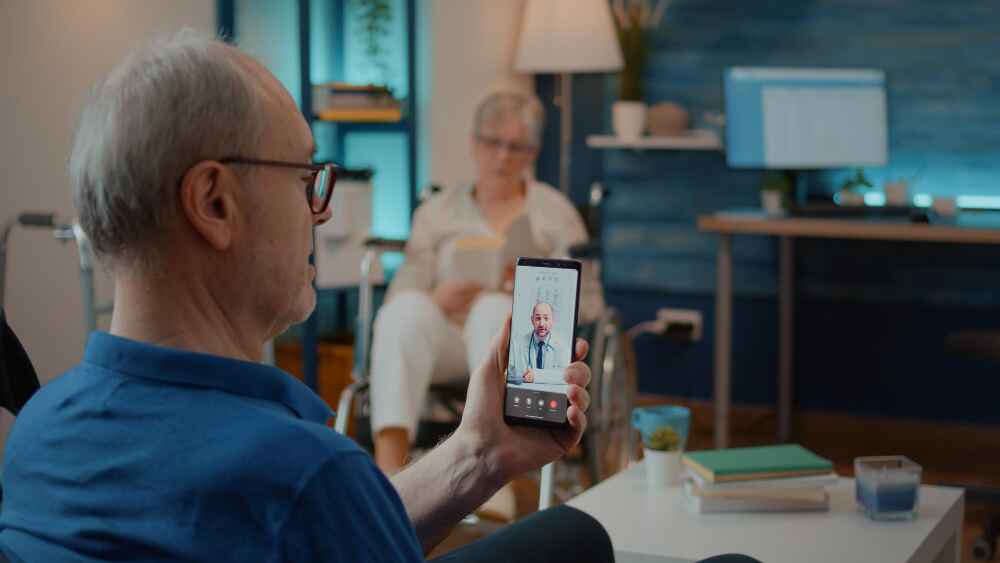
Who Is Benefiting the Most From Telemedicine?
- Individuals in remote areas with minimal access to healthcare centres.
- People with chronic illnesses or pregnant women who require regular monitoring.
- Anyone seeking the convenience of consulting a specialist from their home.
- Types
Telecommunication can be categorised into four main types, with Real-Time or synchronous Telemedicine being the most common.
- Mode of Communication: Telemedicine can occur through multiple channels, including video calls, audio calls, or text-based messaging. Video consultations allow doctors to visually examine patients, audio calls help in verbal discussions, and text messaging is useful for follow-ups, reminders, or sharing medical advice.
- Purpose of Consultation: Telemedicine can be used for different purposes, such as a first-time consultation, a follow-up checkup, or even emergency advice when immediate guidance is required.
- Timing of Information: Consultations can be real-time (synchronous), where the doctor and patient interact live, and asynchronous, where the patient shares information, symptoms, or test reports for the doctor to review and respond later.
- Recipients of Advice: Telemedicine is flexible in terms of who receives the guidance. It can be a Registered Medical Practitioner (RMP) advising a patient, consulting with a caregiver, providing guidance to another medical practitioner, or even training and instructing health workers in remote areas.
- Business Models
- Consultation over Telemedicine Platform – These platforms, including websites and mobile applications, provide calling or messaging services where the consultant connects to the patient virtually through the online platform, and after the session, the prescription is sent in the same app or website to the beneficiary.
- Consultation over a Messaging Platform- Patient and healthcare professional consult informally over a messaging platform.
- Physician-to-Physician consultations: Informal, with the physician personally handling the patient’s case and consulting a specialist when needed.
- Cross-Border Consultations – It is a subset of physician-to-physician consultations that happen across the boundaries.
Read More: Ayurveda Treatment For Asthma | A Complete Treatment With Arogyadham Health & Wellness
Future Outlook of Telemedicine
Telecommunication is a newer concept and is gaining widespread popularity. A recent study found that 70% of healthcare resources are concentrated in urban areas, where 27% of the country’s population lives, and 30% serve in rural areas, where 70% of the population lives. Telemedicine has considerable potential to fill this huge gap, as it has eliminated distance as an obstacle anywhere in the world.
The COVID period let the trend of Telemedicine flourish more through digital platforms, where people are able to take online doctor consultations via video call, text, and voice call.
The people who benefit most from Telemedicine are people living in rural areas with very minimal access to healthcare centres and professionals. It has become the new normal.
Telemedicine has several benefits, such as patients not feeling awkward during sessions compared to in-person visits. Free light discussions allow patients to express themselves freely and discuss every detail related to the disease.
From now on, it is a growing future outlook for Telemedicine. Today, in almost everything, the work culture has undergone significant change. The shift from conventional to technology-driven methods is evident, and as technology continues to advance, it is efficiently solving the problems that earlier seemed difficult to address.
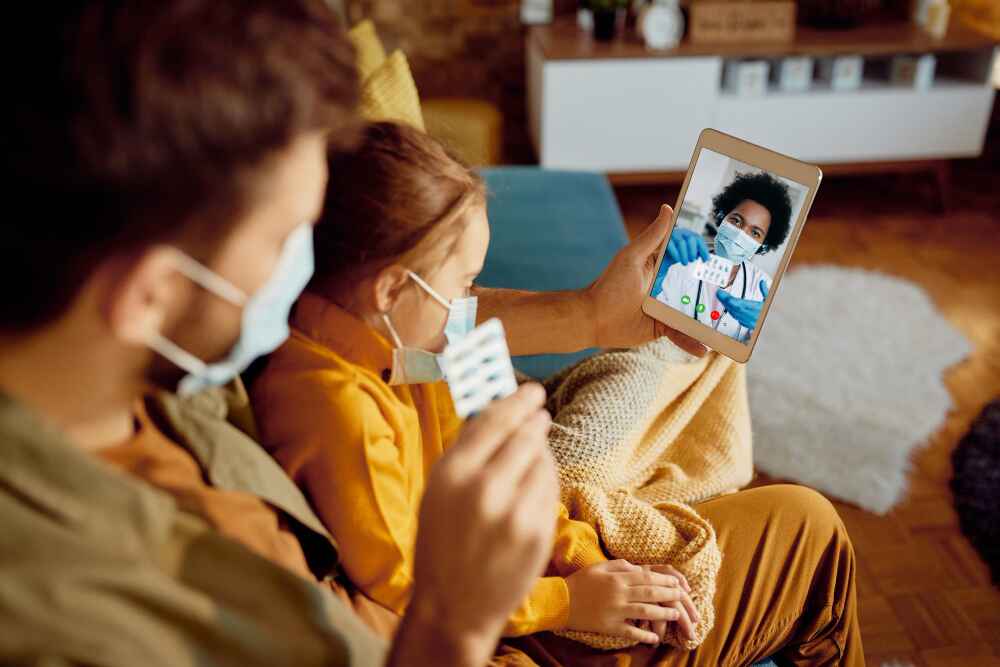
Ayurveda in the digital era
The digital revolution has opened up a new world for Ayurveda, and so ancient wisdom is just an app click away for everyone in this online era. The health apps have noted a sharp increase in their popularity in recent years, which shows a growing interest in people in self-care and wellness.
Smartwatches have gone even further than their original roles as fitness instruments – they are now becoming a virtual trainer, monitoring us 24/7. They monitor how much exercise we perform, our sleep patterns throughout the day, our heart rate at any given time, and even our stress levels. These devices provide immediate and direct information that allows people to take charge of their own health: They are like lifetime wellness coaches, which you have to pay for only once.
- Ayurvedic Apps
Ayurvedic apps are now connecting users with this centuries-old Indian medical science better than ever before. These apps offer practical advice, knowledge, and lifestyle guidance on Ayurveda, including information about herbs and other natural treatments or daily wellness practices. They often offer the following features:
- Symptom Tracking – Users can keep a record of their daily habits, symptoms, and dosha imbalances. This allows them to track their health conditions and helps them get back into balance again.
- Personalised Recommendations: They may also suggest changes to diet, exercises, or herbal remedies based on the individual’s prakriti.
- Educational Content: Many apps have digital archives where users can access knowledge about Ayurvedic concepts, remedies, and recipes for holistic living.
- Benefits: These apps have user-friendly Interfaces and allow individuals to study Ayurveda from anywhere, whether at home or at the office. They have made it easier to take care of one’s overall health.
These applications notify users with Ayurveda Health Tips and Knowledge, encouraging us to be conscious of our health condition and to learn about Ayurvedic herbs and remedies for a healthy life.
- Challenges: Being beneficial, it suggests one flaw of the standardisation problem because it is hard to measure the accuracy and correctness of information provided by them. Caution should be exercised, and recommendations should be followed up based on trusted sources or certified Ayurvedic professionals.
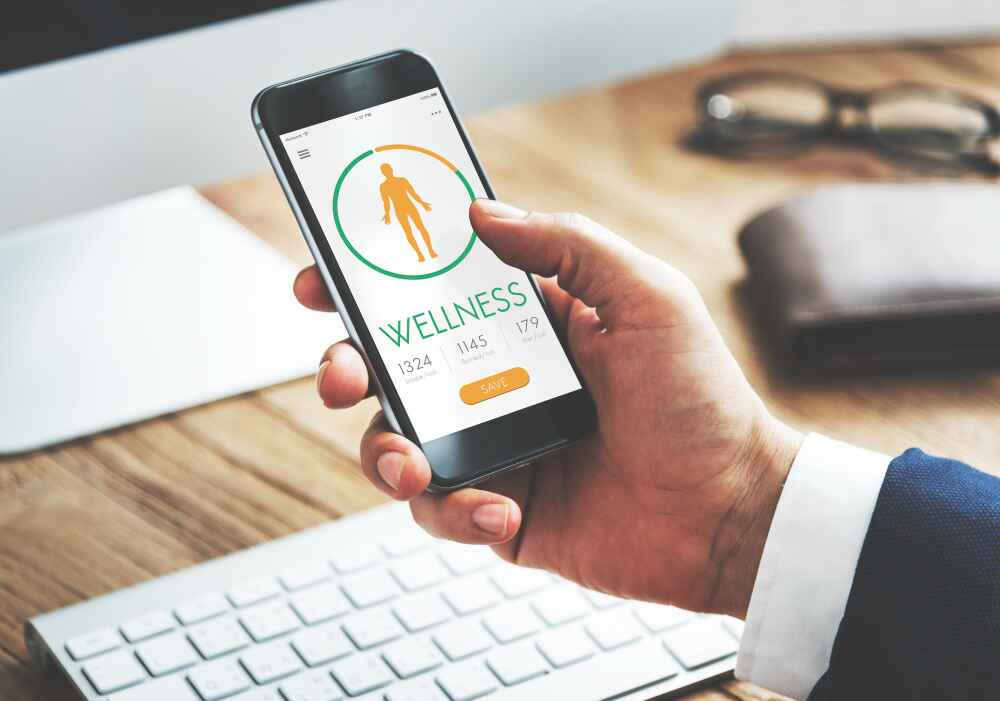
- Social Media Apps
Today, social media platforms are useful for spreading Ayurvedic knowledge worldwide. Millions of fans are following health tips, wellness routines, and ayurvedic routines on various social media platforms like Podcasts, Instagram pages, YouTube channels, and TikTok. Through these apps, many Academicians, wellness enthusiasts, and Ayurveda practitioners directly connect with the audience, which helps them drive awareness and restore people’s interest in living a holistic life.
Advantages: Social media is making it possible for Ayurveda to gain widespread recognition and bring in large audiences. It also facilitates building a virtual community over a digital space where people can exchange notes, experiences, and ask questions or share their queries with each other from different corners of the world, which helps every participant to learn something new.
Challenges: The primary concern is authenticity. Not all online content can be trusted; it may not be evidence-based or accurate. Misinformation can be easily spread on social media due to a lack of proper regulation, and it is also challenging to do so. Users should verify sources and consult accredited practitioners to ensure the information they receive is reliable and safe.
Read More: Need the Best Ayurvedic Treatment for Depression?
Conclusion
Ayurveda has always been a precious body of knowledge in our civilisation for ages. The wisdom that emphasises holistic fitness and preventive care focuses on the root cause of the problem and tries to address it there. There is a lot of push from the people or the government now in promoting Ayurveda because it is not just a health science, it’s a blessing that has immense power to transform one’s being completely. Technology has helped promote this science of life, from wellness apps and AI to new technological revolutions like telemedicine. Ayurveda now has lots of companions to take on a journey around the world and bless more and more people with its wise care and wellness approach.
Leave all your health concerns to us at Arogyadham Health and Wellness Centre, where our duty is to care for you and make you aware of health issues.
Ready to Heal Naturally?

Share With
Friends

Dr. Rakesh Agarwal, a third-generation Ayurveda expert and research scholar, treats chronic ailments through Ayurveda and Panchakarma. He is also the founder-editor of Arogyadham Magazine, promoting Ayurveda and wellness to over a million readers since 1992.

Dr. Arjun Raj, an Ayurvedic physician and wellness expert, is the Director of Arogyadham Health Care and serves on the executive board of Arogyadham Health and Wellness. He blends traditional Ayurveda with modern wellness to promote balanced, healthy living.
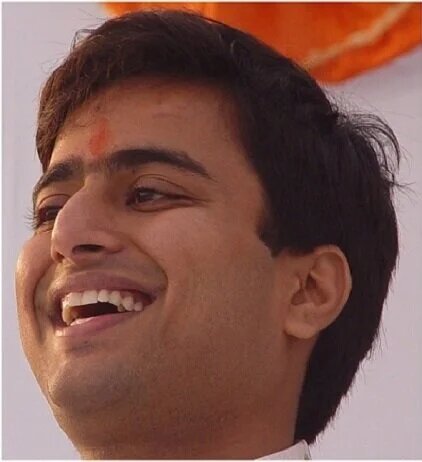
Dr. Amrit Raj, an Ayurvedic doctor and certified yoga teacher, is the Director of Arogyadham Health and Wellness. He specializes in chronic conditions and actively promotes Ayurveda and yoga worldwide for healthier living.










